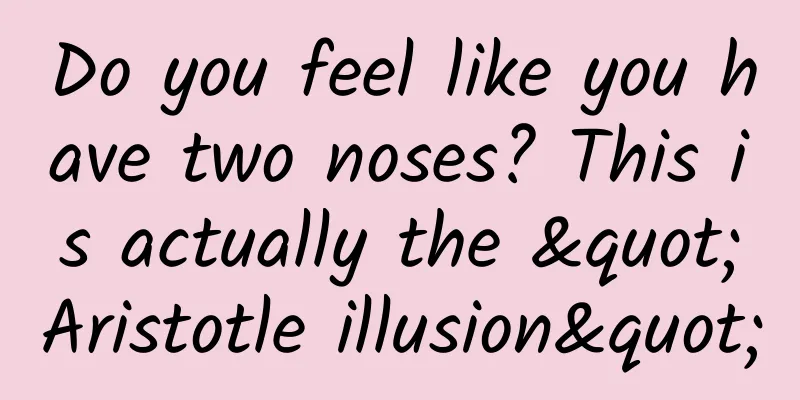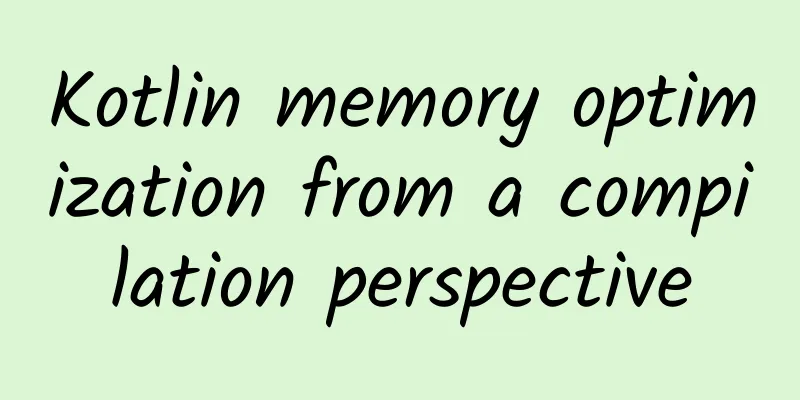Do you feel like you have two noses? This is actually the "Aristotle illusion"

|
Let's do an interesting experiment: cross the middle finger of one hand over the index finger and then slide the crossed fingertips gently across the tip of your nose. Carefully feel the feeling from your fingers. Do you feel as if you have two noses? If you touch a corner of your phone in the same way, or touch a small round object, such as a soybean, you will also feel as if you are touching two objects. In fact, this feeling is an illusion. It was discovered by the ancient Greek "encyclopedic" scientist Aristotle more than 2,000 years ago, so it is also called the Aristotle illusion. Aristotle mentioned in Metaphysics: “When we cross our fingers, touch says there are two objects, while vision says there is one object.” (Volume 4, Chapter 6) Image source: Internet How do illusions occur? The Aristotle illusion is the so-called " perceptual separation ." When we cross our index and middle fingers, it is the outside of these two fingers that touch the nose, and the tactile sensation is transmitted to the brain from these two sides. Under normal circumstances, it is the inner sides of the two fingers that touch the tip of the nose, and the outer sides of the two fingers almost never touch the same object at the same time, so the brain "takes it for granted" that two noses are being touched. The tip of the nose is touched by the outer sides of the two fingers. Image source: lhecht The answer to this phenomenon can also be raised to the philosophical level. French philosopher and phenomenologist Merleau-Ponty believes that the "Aristotelian illusion" is related to body schema: body schema can be simply understood as the body's movement habits and perceptual possibilities. Movement habits and perceptual possibilities refer to the actions that the subject usually performs and can perform, and crossing fingers is an "artificial action" that exceeds the possibility of natural finger movement. For this reason, the body schema cannot refer to the crossed fingers as an organ pointing to the same motor project or intention. Therefore, the two crossed fingers act separately and produce separate sensations that cannot be unified in one perception. Why is the brain so prone to illusions? Nobel Prize winner and cognitive psychologist Daniel Kahneman believes that evolution has made the brain very stingy in the allocation and use of cognitive resources , "not using the brain if it can be avoided." And in order to cope with the ever-changing world, the brain often chooses to sacrifice some "correctness" in exchange for "speed." How is this achieved? That is through "experience." "Experience" is a computing shortcut created by the brain in pursuit of speed. Through certain pre-established assumptions, the brain can save a lot of resources. For example: the brain assumes that things are larger when they are near and smaller when they are far away; Do you feel like the monster behind is bigger than the one in front? In fact, they are the same size. Source: Internet The brain's default color of an object usually does not change arbitrarily. If it changes, it is because the brightness or color of the light source has changed. Classic old photo: Is the skirt you see blue and black or white and gold? Image source: Internet These experiences become experiences because these characteristics (such as near is big and far is small) are constant in most cases, which can help us quickly recognize and understand the world. Therefore, in the process of evolution, they have become the inherent information extraction method of the brain. But there are always exceptions. For example, if the brain still uses its inherent way to understand the "unnatural things" and "unnatural actions" constructed by humans, it will produce illusions and make us "deceived." This can also be understood as a bug caused by the imperfect evolution of the brain. Illusions also contribute Although regarded as a bug of the brain, illusions have made significant contributions in many fields. For example, in the field of scientific research, they can provide scientists with a unique perspective to help them understand how the brain processes information, constructs perceptions, and makes decisions, which is of great significance for promoting the development of cognitive science, psychology, neuroscience and other fields. Aristotle's illusion contributes to Parkinson's disease research Source: Brain In interior design or architectural planning, illusions are often used by designers to change the perception of space. For example, by cleverly using mirrors or color matching, a small space can be made to look more spacious and comfortable. Friends who live in large houses can skip this one. Glass doors increase transparency. Image source: Internet In film and animation production, optical illusion is also an old actor. The famous Hitchcock zoom is essentially an application of optical illusion. By zooming in or out of the camera lens, the foreground remains in the same position while the background appears to be squeezed or stretched. This gives us a wonderful feeling when watching a movie. Hitchcock zoom source: see watermark The Aristotle illusion is just one of many illusion phenomena, which reveals the limitations of our brain's perception of the world. However, it is these limitations that drive us to continue to explore, study, and improve our cognitive system. At the same time, it makes us realize that science is not a mysterious field that is out of reach, but is actually hidden in every detail of our daily life. References: "Judgement under uncertainty: Heuristics and bias" Aristotle's illusion and the enactive embodied approach to perception Aristotle's Illusion in Parkinson's Disease: Evidence for Normal Interdigit Tactile Perception | Brain | Oxford Academic https://psychologicalscience.blog.gustavus.edu/2020/04/09/a-hands-down-simple-illusion-the-aristotle-illusion/ Author: Cheng Xin, Master of Social Psychology, Beijing Normal University Reviewer: Li Xiran, Psychological Consultant, Master of Psychoanalytic Theory Research, University College London Editor: Dong Xiaoxian |
>>: Huh? Ducks can climb trees...
Recommend
Baidu shows one-year results: three major connection mechanisms form a synergy effect
Last year, Baidu CEO Robin Li announced that Baid...
Home renovation mini program, how much does it cost to make a furniture mini program in Lijiang?
The factors affecting the quotation of Lijiang Fu...
Why are 1 to 0 read as “一两三四五六拐怕勾洞”?
When watching war movies, you must have heard the...
World Mental Health Day丨Ding Dong! Please keep this guide to mental health care!
END Tadpole five-line score original work, please...
In-depth analysis of Pinduoduo’s product operations in 2019!
Jobs said that consumers don’t know what they nee...
The Year of the Tiger is here. Are wild tigers doing well? A chart shows the current status of the "big cats"
|||| Produced by: Science Central Kitchen Produce...
An example analysis of Tieba user operation strategy!
User stratification refers to the purposeful form...
National Eye Care Day丨Don’t believe these 10 rumors about eyes →
As the saying goes, "eyes are windows to the...
To wash or not to wash? That is the question!
Editor: Guru...
User growth methodology!
According to the 2019Q1 Mobile Internet Ecosystem...
Come and see! These blood-sucking bugs are scarier than mosquitoes and carry a variety of pathogens...
There is a kind of insect that can suck blood fro...
Silent mutations: a way to conquer cancer?
On the road of scientific exploration, it is ofte...
After eating meat for so many years, you still can’t tell the difference between hot fresh meat, cold fresh meat and frozen meat?
In a blink of an eye, 2021 has entered its final ...
Fourth in the world! He led the team to conquer chlortetracycline and broke the US monopoly
In January 1956, the CPC Central Committee decide...
A girl in Shandong fell to her death in a shopping mall. Be careful of these 6 "safety risk points" →
On the evening of November 16, a heart-wrenching ...









